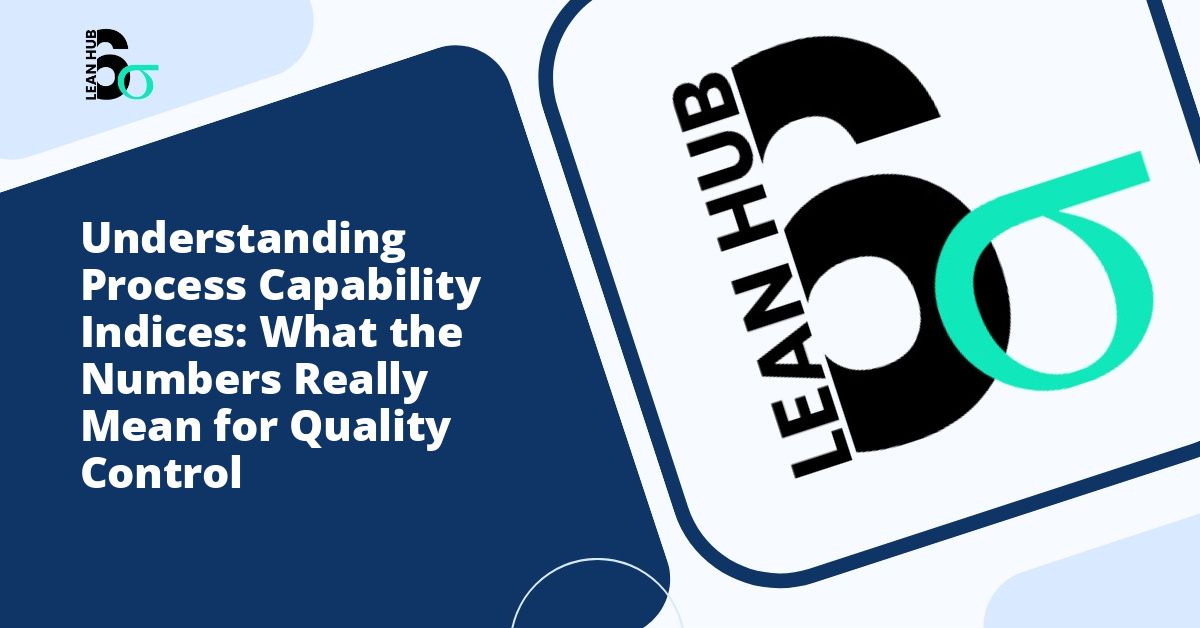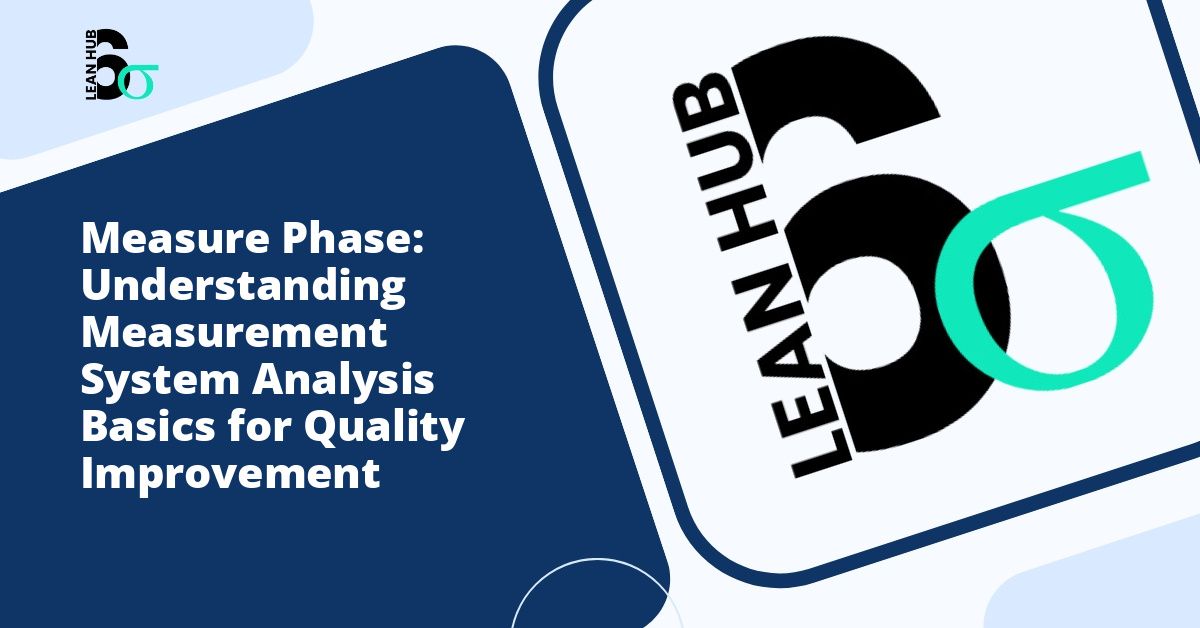In the world of quality management and process improvement, understanding whether your manufacturing or service processes can consistently meet customer specifications is paramount. Process capability indices provide a quantitative method to evaluate this critical aspect of operational performance. These statistical tools serve as a universal language that quality professionals, engineers, and managers use to communicate process performance and identify improvement opportunities.
This comprehensive guide will demystify process capability indices, explaining what these numbers truly represent and how organizations leverage them to drive continuous improvement initiatives. You might also enjoy reading about 5 Common Mistakes in the Measure Phase and How to Avoid Them for Lean Six Sigma Success.
What Are Process Capability Indices?
Process capability indices are statistical measurements that compare the output of a process to its specification limits. Essentially, these metrics answer a fundamental question: Is your process capable of producing products or delivering services that consistently meet established requirements? You might also enjoy reading about How to Write Clear Operational Definitions for Your Six Sigma Project.
These indices quantify the relationship between the natural variation inherent in your process and the tolerance range defined by customer specifications or engineering requirements. When properly interpreted, they provide invaluable insights into process performance, potential defect rates, and areas requiring improvement. You might also enjoy reading about What is Measurement Systems Analysis and Why It Matters in Six Sigma.
Organizations implementing lean six sigma methodologies rely heavily on these indices throughout their improvement projects. During the recognize phase of problem-solving initiatives, teams use capability analysis to identify processes that warrant attention and quantify the magnitude of performance gaps.
The Main Process Capability Indices Explained
Cp: Process Capability Index
The Cp index represents the simplest form of capability measurement. It compares the specification range (the difference between upper and lower specification limits) to the process variation (typically measured as six standard deviations of the process).
The formula considers only the width of the specification range relative to process variation, without accounting for where the process is actually centered. A Cp value of 1.0 indicates that the process variation exactly equals the specification range. Values greater than 1.0 suggest the process variation is narrower than the specification range, which is desirable.
However, Cp has a significant limitation: it assumes the process is perfectly centered between the specification limits. In reality, processes often drift or operate off-center, which is where other indices become valuable.
Cpk: Process Capability Index Adjusted for Mean
The Cpk index addresses the primary weakness of Cp by accounting for process centering. It measures the distance from the process mean to the nearest specification limit, expressed in terms of standard deviations.
This makes Cpk a more realistic and practical measure of process capability. A process might have excellent variation control (high Cp) but still produce defects if it operates off-center. Cpk captures this reality by always being equal to or less than Cp.
When Cp and Cpk are equal, the process is perfectly centered. When Cpk is significantly lower than Cp, it indicates the process mean has shifted away from the target, even though variation might be well-controlled. This distinction is crucial for lean six sigma practitioners during the recognize phase when diagnosing root causes of quality issues.
Pp and Ppk: Process Performance Indices
While Cp and Cpk measure potential capability based on within-subgroup variation, Pp and Ppk indices measure actual long-term performance using total variation. The distinction matters because short-term studies might not capture all sources of variation that affect a process over extended periods.
Pp and Ppk are calculated similarly to Cp and Cpk but use overall standard deviation rather than within-subgroup standard deviation. These indices typically yield lower values because they incorporate additional variation sources such as shifts between production runs, different operators, material lot variations, and environmental changes.
Organizations use Pp and Ppk to understand real-world performance, while Cp and Cpk indicate the theoretical best the process could achieve if special cause variations were eliminated.
Interpreting the Numbers: What Do They Mean?
Understanding what various capability index values signify is essential for making informed decisions about process improvement priorities.
Capability Index Benchmarks
- Less than 1.0: The process is incapable of consistently meeting specifications. Defects are virtually certain, and immediate corrective action is required.
- 1.0 to 1.33: The process is marginally capable but requires close monitoring. Improvement efforts should be prioritized.
- 1.33 to 1.67: The process is adequately capable for most applications. This range represents acceptable performance for many industries.
- Greater than 1.67: The process demonstrates excellent capability with minimal defect probability. This level is often targeted in critical applications.
- Greater than 2.0: The process shows exceptional capability, typical of six sigma level performance.
Industry standards vary considerably. Automotive suppliers often require minimum Cpk values of 1.33 or higher, while aerospace and medical device manufacturers may demand 1.67 or greater due to safety-critical applications.
Practical Applications in Quality Management
Process capability indices serve multiple strategic and operational purposes within organizations committed to quality excellence.
Supplier Qualification and Monitoring
Organizations use capability indices to evaluate potential suppliers during the qualification process. Requiring suppliers to demonstrate specific Cpk values ensures they can consistently meet quality requirements before establishing business relationships. Ongoing monitoring of supplier capability indices provides early warning of degrading performance.
Process Validation and Control
Manufacturing organizations conduct capability studies to validate that new processes or equipment can achieve required quality levels before full production launch. Regular capability assessments then monitor whether processes remain in statistical control over time.
Continuous Improvement Prioritization
When multiple processes require improvement, capability indices help prioritize where to focus resources. Processes with the lowest indices typically receive attention first, as they pose the greatest quality risks and improvement opportunities.
Within lean six sigma frameworks, capability analysis during the recognize phase quantifies baseline performance and establishes improvement targets. Teams can calculate the potential defect reduction and cost savings associated with capability improvements.
Common Misconceptions and Limitations
Despite their utility, process capability indices have limitations that users must understand to avoid misinterpretation.
Assumption of Normal Distribution
Standard capability indices assume process data follows a normal (bell curve) distribution. When data is skewed or follows other distributions, traditional indices may provide misleading results. Alternative approaches or data transformations may be necessary for non-normal processes.
Static Snapshot in Time
Capability studies represent process performance during the study period. Process performance can change due to various factors including tool wear, operator changes, or material variations. Regular reassessment is essential rather than relying on outdated capability studies.
Specification Limits vs. Customer Requirements
Capability indices measure conformance to specification limits, which may not perfectly align with customer satisfaction. A process might be statistically capable yet still produce outcomes that customers find marginal or unacceptable if specifications were set inappropriately.
Implementing Capability Analysis in Your Organization
Successfully incorporating process capability analysis requires systematic approaches and organizational commitment.
Begin by identifying critical processes that directly impact customer satisfaction or product quality. Establish clear specification limits based on customer requirements and engineering analysis. Implement appropriate data collection systems to gather sufficient sample sizes for meaningful statistical analysis.
Training personnel to correctly calculate, interpret, and act upon capability indices is essential. Statistical software packages simplify calculations, but human judgment remains crucial for contextual interpretation and decision-making.
Integrate capability analysis into routine management reviews and continuous improvement programs. Make capability metrics visible through dashboards and performance scorecards to maintain organizational focus on process excellence.
Conclusion
Process capability indices translate complex statistical concepts into actionable metrics that guide quality improvement efforts. Understanding what these numbers truly mean empowers organizations to make data-driven decisions about process performance, improvement priorities, and resource allocation.
Whether you are implementing lean six sigma initiatives, qualifying suppliers, or validating manufacturing processes, capability indices provide objective evidence of process performance. During the recognize phase of problem-solving, these metrics establish baselines and quantify improvement opportunities.
The key to leveraging capability indices effectively lies in understanding both their power and limitations. Use them as valuable tools within a broader quality management system rather than as isolated metrics. When properly applied, process capability indices illuminate the path toward operational excellence and consistent customer satisfaction.








